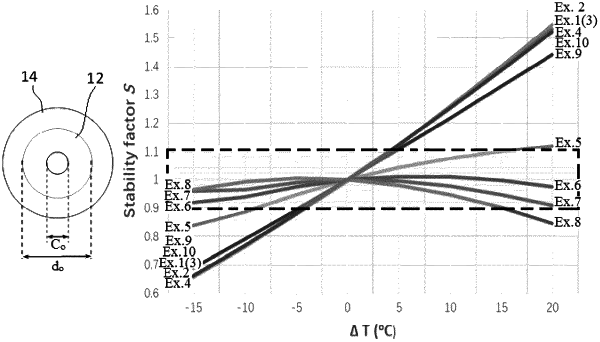| CPC A61M 5/16804 (2013.01) [A61M 5/148 (2013.01); A61M 5/152 (2013.01); A61M 2205/0216 (2013.01); A61M 2205/3331 (2013.01); A61M 2205/3372 (2013.01)] | 13 Claims |

|
1. A temperature compensation flow-limiting device, configured to be disposed in disposed in an infusion tube of an infusion system to improve instability, caused by temperature change, of the flow velocity of a medicinal solution inside the infusion tube and comprising at least one inner layer and at least one outer layer bonded to an outer side of the inner layer to avoid the inner layer being separated from the outer layer when in use, wherein the coefficient of thermal expansion (CTE) of the inner layer is greater than the coefficient of thermal expansion of the outer layer, and make the flow rate stability coefficient S in the following range: 1.1>S>0.9,
 where Q(T) is the flow rate of the inner layer when the temperature is T, Qo is the flow rate of the inner layer at the initial temperature, C(T) is the inner cavity diameter of the inner layer when the temperature is T, Co is the inner cavity diameter of the inner layer at the initial temperature, E is the thermal expansion coefficient of the outer layer, e is the thermal expansion coefficient of the inner layer, ΔT is the temperature difference, the inner layer expands when the temperature of the fluid inside the infusion path increases, the internal diameter of the inner layer decreases as it is limited by the outer layer, the inner layer shrinks when the temperature of the fluid inside the infusion tube decreases, and the internal diameter of the inner layer increases as it is limited by the outer layer.
|